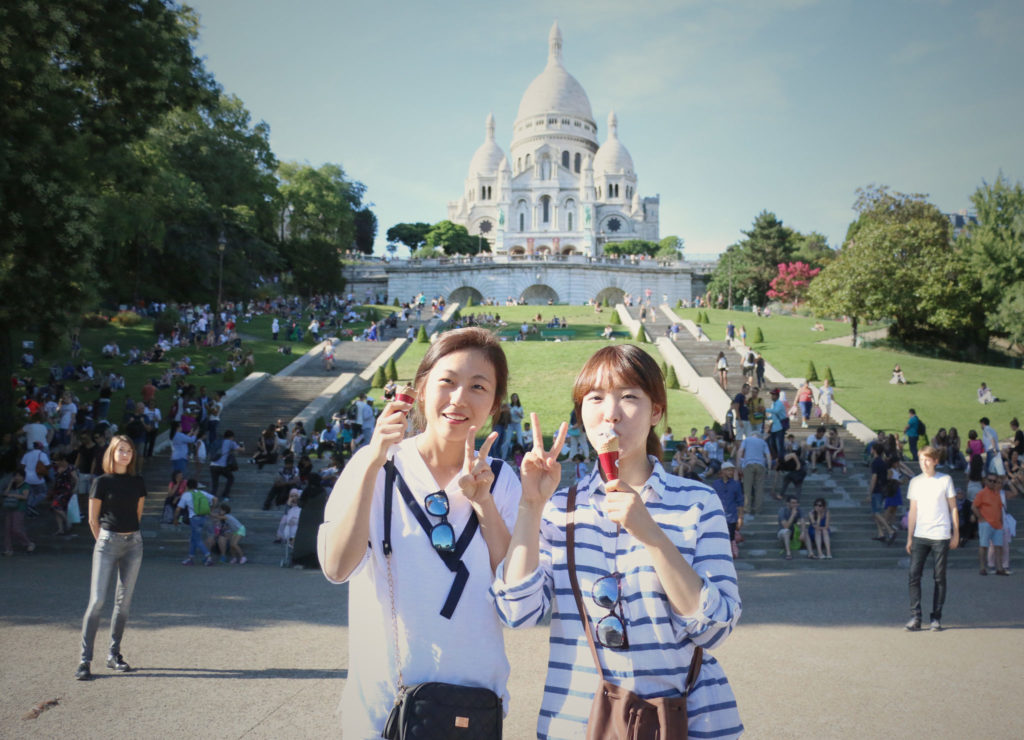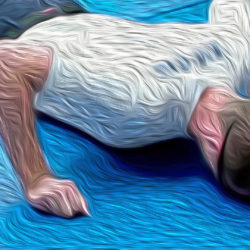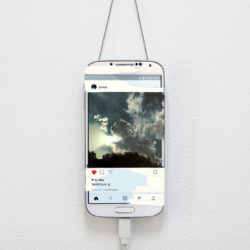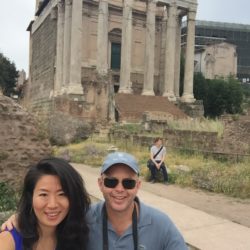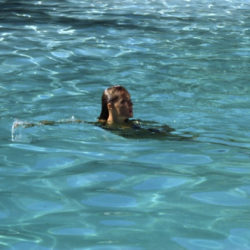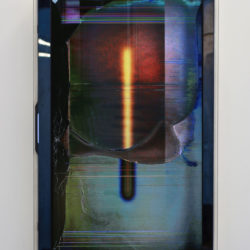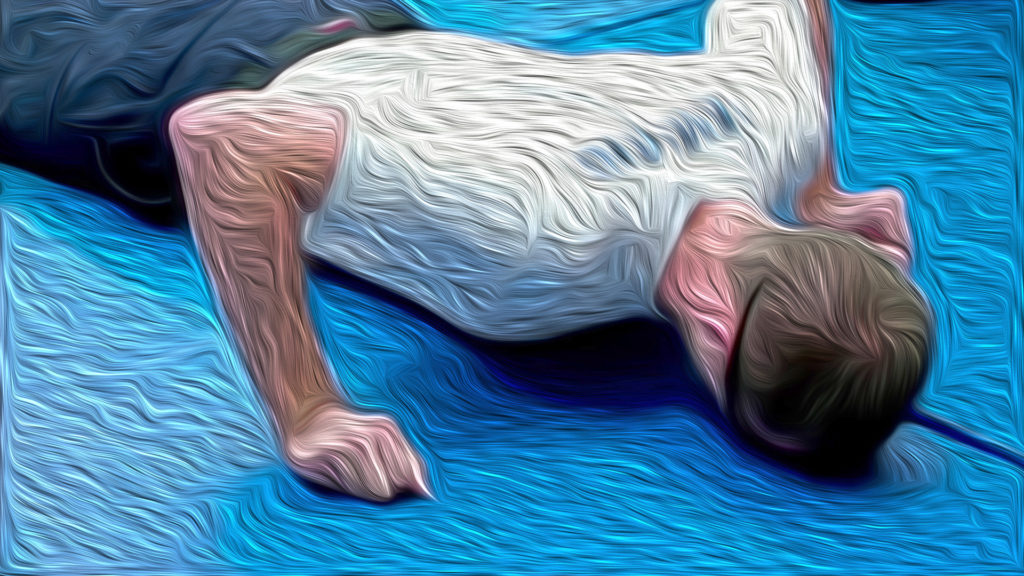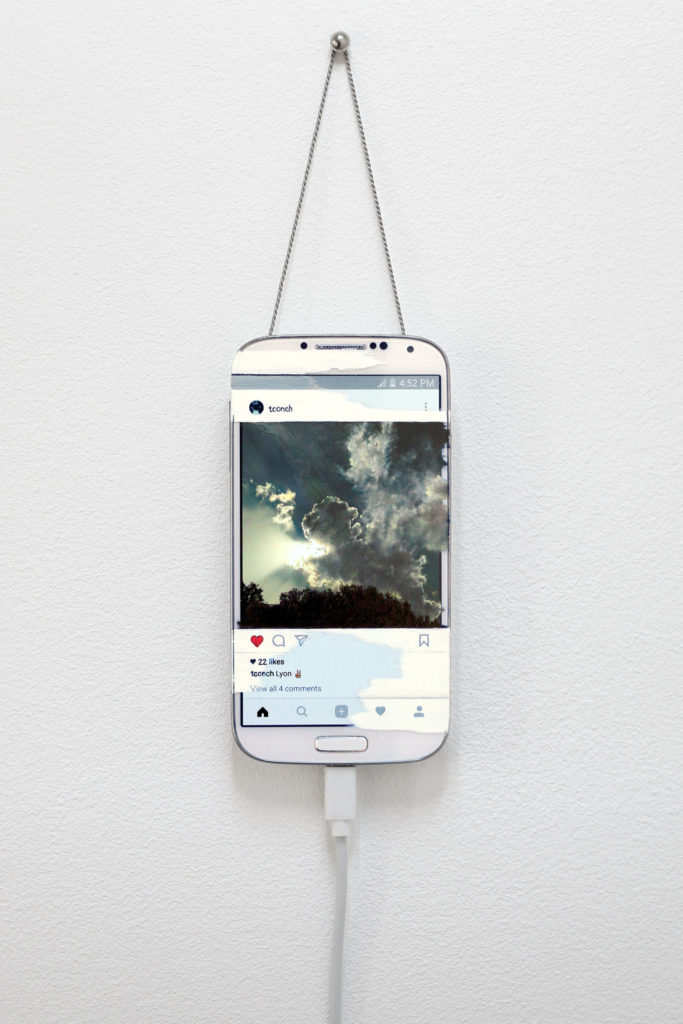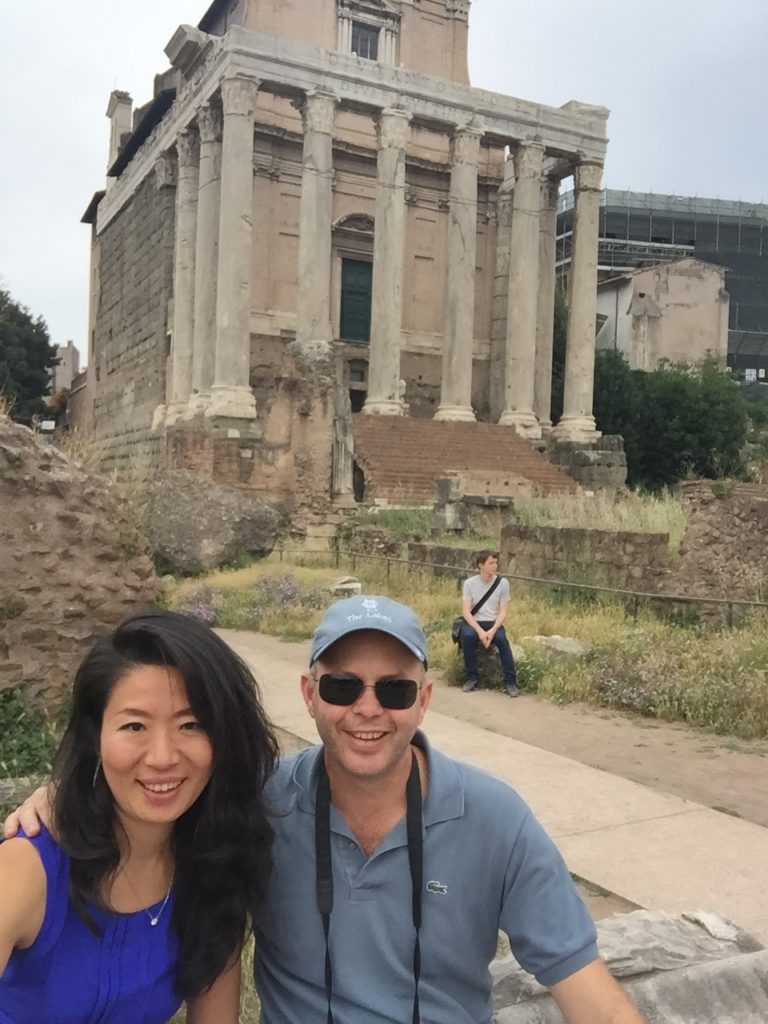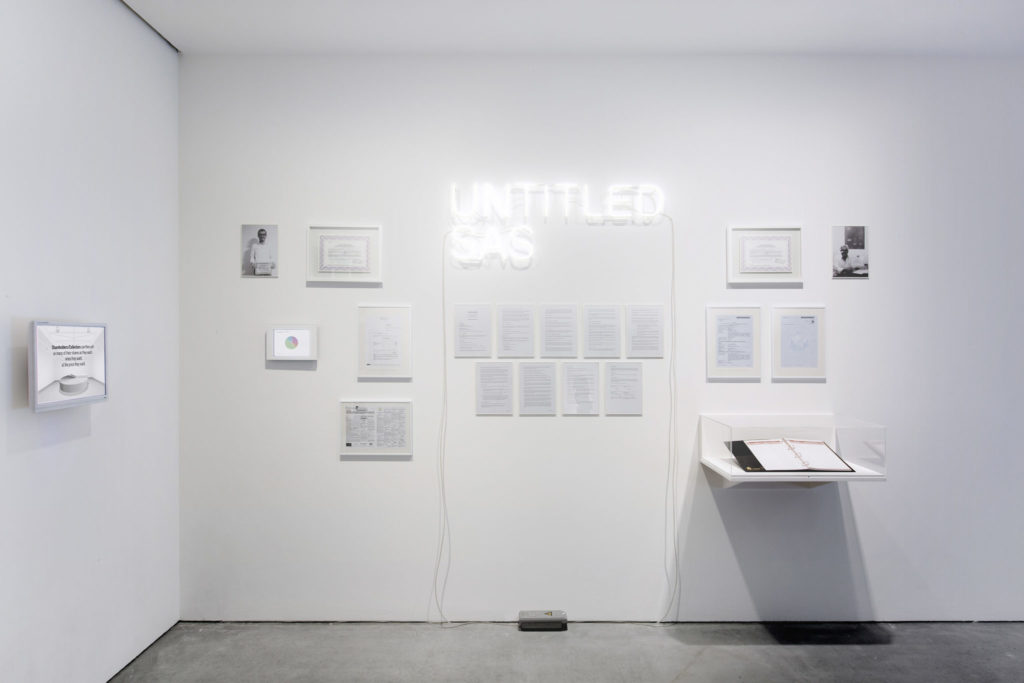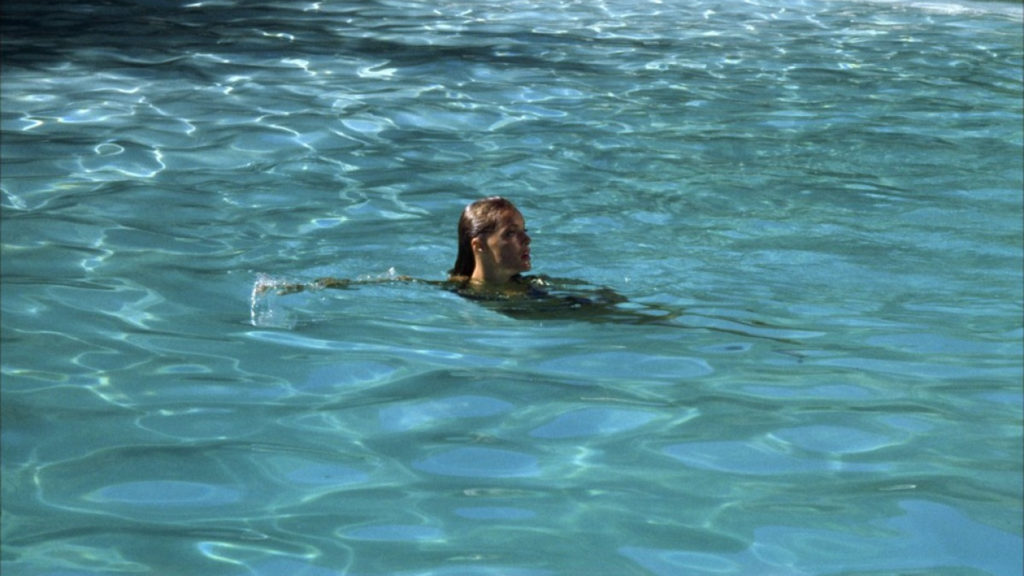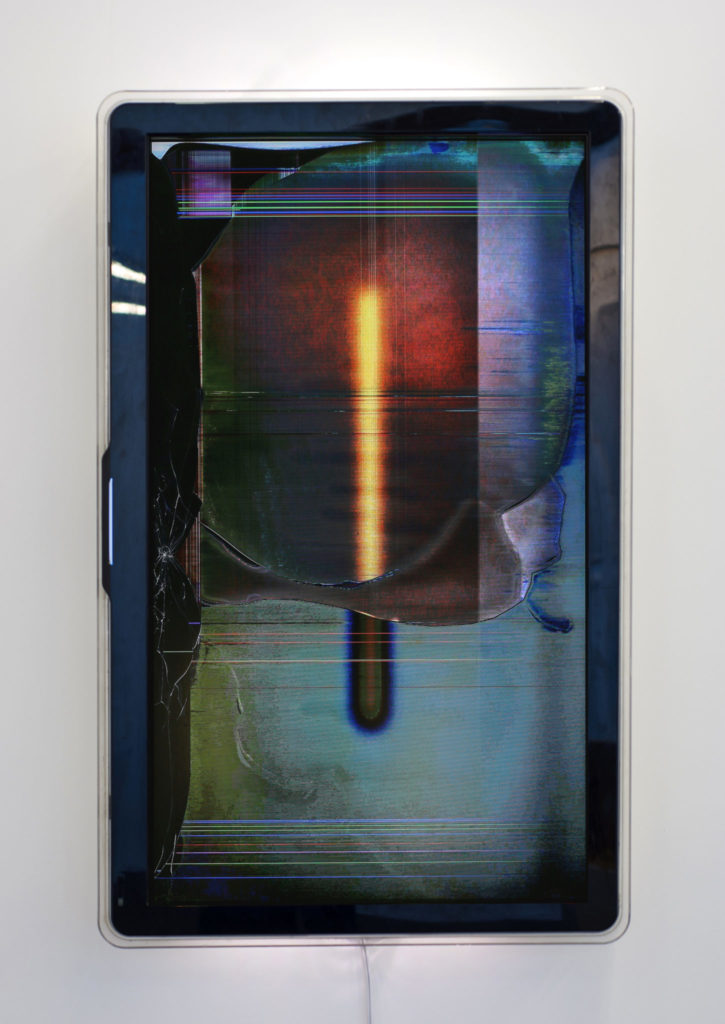Émilie Brout
Born 1984 & 1982, France. Live and work in Paris.
Émilie Brout & Maxime Marion are graduated from ENSA Nancy, ESA Aix-en-Provence and joined for two years the ENSAD Lab in Paris, where they began their collaboration. Their work has been the recipient of the Arte Laguna Prize and the Contemporary Talent Prize of the François Schneider foundation. It was included in the 5th Moscow International Biennale for Young Art, the 5th ADIAF triennale and numerous group exhibitions and screenings including at Daegu Art Museum; Seongnam Arts Center; AramNuri Arts Center, Goyang; Untitled Miami Beach; OCAT Shenzhen; Art Brussels; Museum of Modern and Contemporary Art of Rijeka; Loop Barcelona; Centre pour l’Image Contemporaine, Geneva; The Solo Project, Basel; Telecom Italia Future Centre, Venice; Palais de Tokyo, MAIF Social Club and Centquatre, Paris; Cité de la céramique, Sèvres; Villa du Parc, Annemasse; Villa Arson, Nice; Vasarely foundation, Aix-en-Provence.
-
Lightning Ride
With Lightning Ride, it is poles of technology, organics and mysticism that collide with electricity as a connecting point. The video is produced from excerpts of "Taser Certifications", a sort of ceremony authorizing in the United States the use of Tasers in the condition of being tased by someone else. Filtered with the Photoshop’s "oil painting effect”, slowed down and accompanied by a disturbing soundtrack, the succeeding images show us bodies and faces whose deformations and positions evoke a feeling of pain as well as a Christian ecstacy. Everything unfolds as if the miracle of electricity, symbol of the rationalization of the world, revived paradoxically an aspiration to transcendence, antipodes joining each other and disappearing in profit of a new map of possibilities. (Sarah Ihler-Meyer)
-
❤ Paintings
Smartphones hung up on the wall like little paintings display photos taken from different Instagram accounts followed by the artists, partly covered and reproduced identically by means of painting. It’s a way for the artists to take these picturesque images back to their possible unconscious, namely by a set of representations originating from art history, especially from German Romanticism, which built and informed our perception of the landscape. Here, just like with cyborgs, there is no more opposition between nature and culture, original and copy, everything is already hybridizations and replications with no origin, model or essence. (Sarah Ihler-Meyer)
-
Ghosts of your Souvenir
Ghosts of your Souvenir is a collection of tourist photographs from different authors but having all our systematic presence in the background in common. The project has a performative dimension - visit places of interest and stay there for several hours in order to be photographed indirectly - and a dimension of investigation: using the information of places and dates of our presence, we find afterwards among those images published online those where we appear. As part of a renewed and extended approach of photography, we operate a move in the act of self-portrait. This series does not derive from direct recordings of ourselves - we don’t push any button - but is to select, from the astronomical amount of existing documents produced by third parties, those in which we appear: vernacular self-portraits, made through the eye and the movement of another. The authors themselves are not aware of our presence when they take the picture, we represent less for them than any decorative element.
When watching this collection of images, the viewer sees at first a series of vacation pictures just as there exist already so many, with a common and familiar aesthetic, representing various famous places of the world. But in a second time, it identifies our recurring presence; although appearing in the background, our bodies then become the main subject of these photographs. They literally embody the link between these traces scattered throughout worldwide databases by people from all over the world too, and encourage us to take another look at these pictures looking banal at first glance. -
Untitled SAS
In French, SAS stands for “société par actions simplifiées”, the equivalent of a registered limited company (LTD or INC in English). Untitled SAS is an immaterial work of art whose medium is a business company, with “work of art” as corporate purpose and with a capital open to everybody interested in buying shares at their own price. The social capital of the company is set to 1,00 € (the minimum legally possible), and 10,000 shares are made available. With a freely negotiable capital, the company allows each collector/shareholder to buy and sell shares at the price he set, thus influencing the company’s overall value (displayed on a dedicated website).
In order to set up the company, the artists worked with one of the largest and oldest lawyer’s office of Paris, Granrut Avocats, who had to resolve many new legal paradoxes for its official registration in the French Trade and Companies Register. A similar gesture was performed, years ago, by the Austrian-Swiss collective etoy, who registered themselves as an actual company in Switzerland, with making art as its corporate purpose. But while etoy, in the early years of the internet, were embracing - in an over-affirmative way - the utopian dream of the new economy in order to set them free from the rules of the art market, Émilie Brout and Maxime Marion are more interested in giving birth to a useless yet fully functional machine that performs and mirrors the ways of working of the current art market, where the value of artworks looks less rooted in the material value of the object or in the cultural value of the work, and more in the ability of a few disruptive characters to manipulate it at their will. At the same time, however, as a socially owned, immaterial artwork with a starting value set to the minimum and able to increase with the help of a community of collectors/shareholders, Untitled SAS is the archetypal work of art: like a medieval church, it mirrors and represents the power in charge, while at the same time being available for the larger society. It also bears some spiritual connotations, recalling the Zones of Immaterial Pictorial Sensibility (1959) by Yves Klein: the empty space exchanged for gold is replaced by the empty shell of a company turned into shares. Finally, it is the perfect portrait of companies like Facebook, that started valueless and evolved into modern golden calfs. (Domenico Quaranta) -
Dérives
Dérives (Drifts) is an infinite film composed of thousands of short cinematographic extracts, each one picturing water differently. The editing of these sequences offers to the spectator an entirely new film in which water becomes the main subject in addition to a journey through its history in the cinema: from The Waterer Watered by frères Lumière (1895) to Titanic by James Cameron (1997) through Knife in the Water by Roman Polanski (1962).
«You could not step twice into the same river; for other waters are ever flowing on to you» according to Heraclitus. Water changes of shape and moves incessantly. It is a type from which everything can rise. This is the reason why Dérives proposes an innovating approach of the narrative thanks to an infinite automatic editing system. Each chosen sequence had first been commented according to different criteria such as year of release, typology (violent water, calm water, loving water according to the distinction of Gaston Bachelard) or degree of intensity.
In exploiting these data, a soft indefinitely pictures these micro-sequences in real time and pertinently link them up through different stylistic processes (ruptures, contrasts, crescendos.). This fluctuating editing conveys meaning hence offering a cinematographic experience always renewed : a kind of meta-narration.
What is to be seen is water playing a calming, terrifying or maternal role (and so ever) in turn, by subtly alternating different dramatic degrees. Water becomes an independent feature of the plot no longer used as a picturesque background; being both realistic and symbolic, an omnipotent and polymorphic entity: protective, majestic and terrible. Water transcends and gets rid of the films that picture it in putting actors down.
Renewing the tradition of the Found Footage with an original approach of editing, Dérives proposes a tribute to water as well as a tribute to the cinematographic art in creating a space of dialogue between these two forms: two powerful vehicles for imagination and mirrors of reality. -
Return of the Broken Screens
Return of the Broken Screens consists of a series of video compositions for damaged screens, found or bought used. The damage and alterations due to bad handling of a former owner are the only mean to differentiate these mass-produced objects that are themselves designed to display all types of images. Here, each composition is created for a specific screen; adapting and playing with their particularities, it blurs the boundaries between real and virtual spaces. As the Japanese art of Kintsugi (reparation of broken pottery with lacquer mixed with powdered gold), the screens find a second life. The hole in the glass of an iPhone, the deliquescent pixels of a plasma screen, the star shaped cracks of a tablet: all these accidents become the origin and are involved in the video, trying to play with each particularity.

 Faire un don
Faire un don
 Artistes
Artistes
 Mon profil
Mon profil


